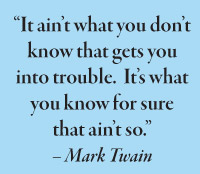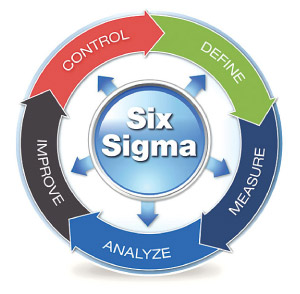How Do You Get Your 101st Train?
Rick Phelps
Synchronous Solutions
I walked upstairs at a Fabricating Shop recently and the management team was in the middle of discussing how they might get their 101st train. Pretty crazy, right? I broke into a huge grin because I knew I had found a way to make Throughput Accounting ‘sticky’!
You probably don’t deal with trains in your business, and neither do those managers! But if you don’t know how to get your 101st train, you will certainly want to find out.
 An important part of our Synchronous Flow System is a powerful concept called Thoughput Accounting. Throughput Dollars, or $T, is integrated into a number of countertops fabricating software systems including ActionFlow, Stone Profit System and Stone App. Knowing how to leverage $T is critical to your success as a business owner.
An important part of our Synchronous Flow System is a powerful concept called Thoughput Accounting. Throughput Dollars, or $T, is integrated into a number of countertops fabricating software systems including ActionFlow, Stone Profit System and Stone App. Knowing how to leverage $T is critical to your success as a business owner.
In 2006 I was working in some coal mines in Wyoming, helping them implement Lean Manufacturing concepts. They had a sister mine in Montana that purported to not need help, apparently they were already quite good at 5S, a workplace organization tool, and implementing Six Sigma* to boot! I wrangled a visit to Montana with the offer of a Lunch & Learn training session on the Theory of Constraints and Throughput Accounting.
After a brief overview of their operation, we got down to eating and learning. They were highly skeptical, especially the site Controller and the General Manager, one of whom informed me:
“You’ve got to understand, coal mining is a HIGH capital, low MARGIN business.”
They explained that the mine cost about $100M per month to operate, and was able to load around 100 trains each month. Each train only carried about $10,000 in profit. They were averaging slightly under $1M profit each month.
It sucks to be them!
They were doing a Six Sigma project focused on making sure every car on every train was as full as it could be, while Lean Manufacturing tools were being applied to eliminate waste. Made perfect sense given their stated mindset!
Here is where understanding Throughput Accounting and specifically $T really comes in handy. You calculate $T by subtracting the Truly Variable Costs (TVE) from Revenue. TVE is essentially what you pay suppliers for your raw materials. Mines pay a minuscule royalty for every ton extracted, so for all intents and purposes, $T equaled Revenue at these mines.
Given their numbers, you don’t have to be a math whiz to realize every train carried about $1M in $T. (About $100M to run the mine for a month, about 100 trains a month to make about $1m a month, means every train is worth about $1M $T…)
I walked the group through this math, and that was it. The Controller had had enough, stated as much, and left the room. So did the General Manager and most everybody else. All except the young Mine Manager, who staring and thinking.
 He finally shook his head and stated “That’s too damn obvious to be true, and too damn simple NOT to be true. Let’s go for a ride to the mine and the train loading station and talk.”
He finally shook his head and stated “That’s too damn obvious to be true, and too damn simple NOT to be true. Let’s go for a ride to the mine and the train loading station and talk.”
“You know, it would be really easy to verify what I am saying. If I am right, then your monthly financial data will be very odd, because each month you will either lose a multiple of $1M, break even, or have profits in a multiple of $1M.” Before leaving for the tour, he had one of his analysts pull the financial data to see if that was true.
As we toured the mine and coal loading facility, we talked about the kinds of projects that would enable one more train to be loaded each month or each week. There were some pretty obvious ones, but they were “too expensive.” After all, how many hundreds of thousands of dollars would you spend to get another train worth a mere $10,000 in profits? Not much, right?
When we got back to the office, the analyst was ready with his graph of monthly profits against # Trains shipped. Months when they loaded 98 trains, they lost $1M; 99 trains, they broke even, 100 trains, they made $1M, 101 trains, they made $2M…
Every day they loaded either 3 or 4 trains. In a 30-day month, if they were to improve their operation slightly and load 4 trains EVERY day, they could make $24M in profit each month, every month.
LOW Margin business??
As Mark Twain so aptly put it:
“It ain’t what you don’t know that gets you into trouble. It’s what you know for sure that ain’t so.”
What is the 101st train? It is those extra jobs you get through each month whose $T fall straight to the bottom line, exploding your profits.
Curious about what else you might know for sure, but just ain’t so? Give Synchronous Solutions a call!
Rick Phelps has been applying the concepts of Synchronous Flow to difficult industrial problems at dozens of businesses and organizations around the world, since the early 1980s.
In 2009, as Cleveland Cliffs’ Director of Continuous Improvement, Rick took on a failing Lean Six Sigma organization, refocused their improvement work using Synchronous Flow, and created a shop floor, engagement driven, continuous improvement process that Cliffs credits with creating a sustained $100M per year reduction in production costs.